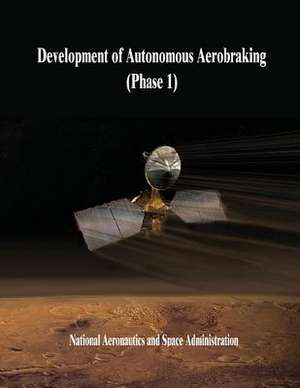Development of Autonomous Aerobraking (Phase 1)
Autor National Aeronautics and Administrationen Limba Engleză Paperback
Preț: 185.02 lei
Nou
Puncte Express: 278
Preț estimativ în valută:
35.40€ • 36.96$ • 29.30£
35.40€ • 36.96$ • 29.30£
Carte disponibilă
Livrare economică 14-28 martie
Preluare comenzi: 021 569.72.76
Specificații
ISBN-13: 9781503235007
ISBN-10: 1503235009
Pagini: 292
Dimensiuni: 216 x 279 x 15 mm
Greutate: 0.68 kg
Editura: CREATESPACE
ISBN-10: 1503235009
Pagini: 292
Dimensiuni: 216 x 279 x 15 mm
Greutate: 0.68 kg
Editura: CREATESPACE
